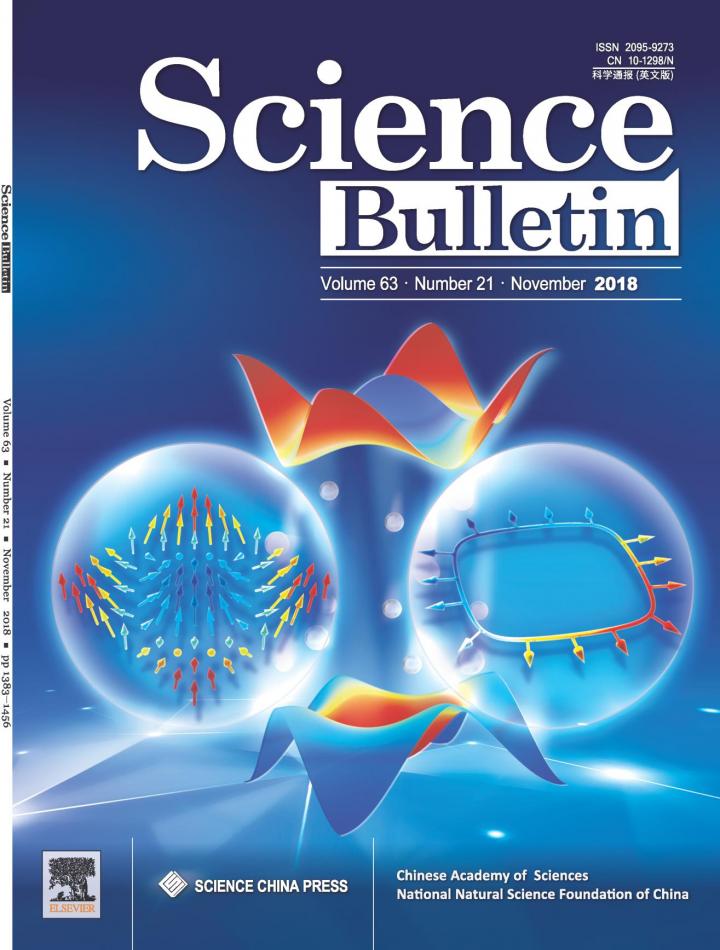
IMAGE: This is the front cover of Science Bulletin 2018(21) issue.
Credit: ©Science China Press
How to characterize a topological phase is one of the most fundamental issues in the field of topological quantum physics. Conventionally, a topological phase is characterized by a topological invariant defined for a many-particle ground state in equilibrium. A generic question arises, is there a non-equilibrium characterization of a topological phase defined in equilibrium? This non-trivial question was recently addressed by Xiong-Jun Liu’s group at Peking University, who established a non-equilibrium classification theory of equilibrium free-fermion topological phases with integer topological invariants, and bridge equilibrium topological phases and non-equilibrium quantum dynamics.
The theory was developed for the generic d-dimensional free-fermion topological phases, with different phases distinguished by different integer topological invariants like the winding numbers or Chern numbers. The non-equilibrium dynamics can be induced by quench, in which process one suddenly tunes the system from an initial trivial phase to a final topological regime. The authors found that, while the bare quench dynamics behave randomly, the time-averaged non-equilibrium dynamics exhibit emergent nontrivial topological pattern in the lower (d-1)-dimensional hypersurfaces, dubbed band-inversion surfaces, of the Brillouin zone. Such emergent topological pattern uniquely corresponds to and so characterizes the bulk topology of the equilibrium phase through an emerging dynamical topological invariant, rendering the generic non-equilibrium characterization theory of topological phases.
This theory bridges the studies of topological phases and non-equilibrium quantum physics. For one side, the work advances the characterization of topological phases from equilibrium theory to non-equilibrium theory, and provides fundamentally new schemes to detect topological states beyond the equilibrium scenarios. The dynamical schemes show explicit advantages over the conventional equilibrium schemes in the detection of topological states. For another side, the work shows insights into the characterization of complex non-equilibrium quantum dynamics by topology. In condensed matter physics, to characterize non-equilibrium quantum physics is usually more complicated than to characterize equilibrium phases. For example, even fixing the initial and final phases for the quench study, there are numerous paths to perform the quench, and in different quench processes the induced bare non-equilibrium quantum dynamics can be sharply different. Importantly, from Liu et al.’s theory all the seemingly distinct quench dynamics manifest identical hidden universal behavior: they exhibit the same emergent nontrivial topological pattern on the band inversion surfaces, and so belong to the same topological class.
A novel issue is that, while the quench dynamics is related to the equilibrium topological phase, the emergent topology of the quantum dynamics by itself is different from the conventional equilibrium topological phases. Many interesting open questions need to be further addressed for the future studies. In particular, as in an equilibrium topological phase there are many nontrivial physics that can be obtained, e.g. the topologically protected gapless boundary modes and defect modes, and the topological stability against local perturbations, etc., are there similar nontrivial topological physics in the emergent topological states of the quench dynamics? Also, can the emergent topological states exist in the correlated systems? All these questions are novel and deserve future studies.

